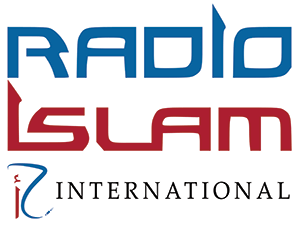Genocide is not something that happens overnight. It is a process, one that unfolds in stages, often over years or even decades, with warning signs that are tragically overlooked or ignored. Understanding these early warning signs is critical, not just for historical reflection but for recognizing and preventing genocide in the present. The framework developed by genocide scholar Dr. Gregory Stanton outlines ten stages of genocide, each of which builds on the last, eventually leading to mass violence and attempted annihilation. Looking at these stages through the lens of the Israeli-Palestinian conflict — particularly the treatment of Palestinians in Gaza and the West Bank – raises serious and urgent concerns.
The first stage is classification. This is when a society begins to define people by “us versus them” thinking — by ethnicity, religion, or nationality. In the context of Palestine, this division has long existed, where Palestinians and Israelis are seen not just as different populations but as fundamentally opposing groups. Palestinians are often portrayed in Israeli discourse as a demographic threat, inherently violent, or incompatible with the idea of a “Jewish state.” This kind of broad classification sets the foundation for further dehumanization.
The second stage is symbolization, where names, languages, dress, or symbols are used to mark people as “other.” In occupied Palestine, this can be seen in the ID systems, separate roads, checkpoints, and walls that divide Palestinians from Jewish settlers and Israeli citizens. The distinction is not only administrative — it is visibly and structurally embedded into the landscape and daily life, reinforcing a constant separation and hierarchy.
Next is discrimination, where the dominant group uses law, custom, and political power to deny the rights of others. In Israel and the occupied territories, there are dual legal systems — one for Israeli settlers, another for Palestinians. Palestinians live under military law, while settlers are subject to civil law, even though they occupy the same geographic space. This legal inequality affects everything from housing rights to freedom of movement, and it creates a deeply entrenched system of apartheid that the UN and numerous human rights organizations have acknowledged.
The fourth stage is dehumanization. This is a critical turning point where the targeted group is no longer seen as fully human. In Israeli political and media rhetoric, Palestinians are often described as “human animals,” “terrorists,” or “barbaric.” Dehumanizing language makes violence against them more acceptable and even justifiable in the eyes of the public. When people are seen as less than human, empathy disappears — and so does restraint.
The fifth stage is organization. Genocide is always planned. While it may not always look like traditional military planning, there are systems, chains of command, and logistical strategies put into place. In Israel’s case, the military blockade of Gaza, the surveillance apparatus in the West Bank, and repeated military offensives show clear evidence of state – level organization and control over Palestinian lives, movement, and resources.
The sixth and seventh stages are polarization and preparation. Extremists drive groups further apart, silencing moderates and fuelling hatred. Any attempts at coexistence or peace are undermined. In Palestine, any Palestinian resistance — armed or peaceful — is labelled terrorism, while Israeli policies that violate international law are justified as self-defence. At the same time, preparations for mass violence increase: weapons are stockpiled, propaganda intensifies, and targeted areas are isolated. Gaza has been under siege for nearly two decades, and in the latest military campaign, entire neighbourhoods were warned to evacuate before being bombed—classic preparation tactics masked as humanitarian concern.
The eighth stage is persecution. This involves systematic targeting: arrests, killings, forced displacements. Over the years, thousands of Palestinians have been imprisoned without trial, homes have been demolished as punishment, and in Gaza, entire communities have been wiped out by airstrikes. Starvation, the denial of medicine, and the cutting off of electricity and water are used as tools of punishment and control.
The ninth stage is extermination — mass killing, which is legally recognized as genocide. In recent months, the scale of Israeli attacks on Gaza has reached horrifying levels. Entire families have been erased. Civilian death tolls are staggering. The aim no longer seems to be just control — it is destruction.
Finally, the tenth stage is denial. After genocide, or even during it, perpetrators deny that a genocide took place. They blame the victims, downplay the numbers, and insist it was all a justified response. Israel consistently frames its actions as self-defence, even when the vast majority of casualties are civilians, and accuses critics of antisemitism rather than engaging with the accusations seriously.
Understanding these stages matters because genocide is preventable. The world has seen these signs before. In the case of Palestine, many of these stages are not just present — they are overlapping and escalating. Recognizing them is not just an academic exercise — it’s a call to conscience, and to action.





0 Comments